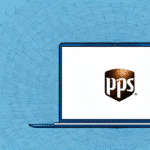The History and Evolution of UPS WorldShip
Launched in 1999, UPS WorldShip has been a cornerstone solution for small to medium-sized businesses seeking efficient shipping and tracking capabilities. Initially designed as a desktop application, WorldShip has continuously evolved to incorporate advanced features and integrate seamlessly with a variety of business management tools.
Over the past two decades, UPS WorldShip has expanded its functionality to support multiple carriers, international shipping options, and mobile capabilities. Today, it stands as a comprehensive shipping software platform that not only handles UPS shipments but also offers interoperability with other major carriers, providing businesses with greater flexibility and control over their shipping operations.
According to UPS’s official resources, WorldShip has adapted to the changing needs of businesses by enhancing its automation capabilities, real-time tracking, and integration with e-commerce platforms, ensuring that it remains relevant and effective in today's fast-paced market. For more detailed information, visit the UPS WorldShip Official Page.
How UPS WorldShip Integrates with Business Operations
UPS WorldShip seamlessly connects with existing business systems such as inventory management, order processing, and accounting software. This integration facilitates the import of order data, addresses, and other relevant information, enabling businesses to create shipping labels, packing slips, and customs forms with ease.
Integration with Inventory Management Systems
By linking WorldShip with inventory management systems, businesses can automate the updating of stock levels based on shipping activities, reducing manual errors and ensuring accurate inventory tracking.
Compatibility with E-commerce Platforms
WorldShip offers connectivity with popular e-commerce platforms like Shopify and WooCommerce, allowing online businesses to streamline their order fulfillment process directly from their online storefront to shipping.
Enhanced integration capabilities contribute to streamlined operations, minimized errors, and increased efficiency. For more insights on business integrations, refer to the Shopify Integration Guide.
Key Features and Benefits of UPS WorldShip
UPS WorldShip offers a plethora of features designed to optimize shipping processes for businesses of all sizes. Key benefits include:
- Integrated Shipping and Management: WorldShip integrates with various business management tools, such as QuickBooks, allowing for seamless data flow and reduced manual entry errors.
- Multiple Carrier Support: In addition to UPS, WorldShip supports other carriers like USPS, FedEx, and DHL, providing businesses with flexibility in choosing shipping partners that best meet their needs.
- Customizable Shipping Options: Businesses can customize shipping settings, label templates, and shipping profiles to align with their specific operational requirements.
- Real-Time Tracking and Reporting: WorldShip offers real-time shipment tracking and comprehensive reporting tools, enabling businesses to monitor shipping activities and make data-driven decisions.
Moreover, WorldShip's ability to manage and analyze shipping expenses allows businesses to optimize their shipping strategies and reduce costs effectively.
For a detailed overview of WorldShip's features, visit the WorldShip Features Page.
Setting Up and Navigating UPS WorldShip
Setting Up Your UPS WorldShip Account
Before utilizing UPS WorldShip, setting up your account and configuring the software is essential. Follow these steps to get started:
- Create a UPS Account: Visit the UPS Signup Page to create an account if you don't already have one.
- Download and Install: Download the WorldShip software from the UPS website and install it on your computer.
- Connect to Your UPS Account: Launch WorldShip and enter your UPS account number and other required credentials to link the software with your UPS account.
- Configure Settings: Customize your shipping preferences, including default shipping options, label formats, and business information.
- Import Order Data: Import your existing order data into WorldShip using the available import tools or by manually entering the information.
Navigating the WorldShip Dashboard
The WorldShip dashboard is the central hub for managing your shipping activities. Key sections include:
- Shipment History: View all past shipments and their statuses.
- Shipping Services: Select and configure shipping options, including method, packaging, and insurance.
- Address Book: Manage customer and recipient addresses efficiently.
- Reports: Access various reports on shipping activity and performance metrics.
Additionally, the dashboard provides tools for managing customs documentation and setting up shipping preferences to ensure smooth and consistent shipping operations.
For a comprehensive guide on navigating the WorldShip dashboard, refer to the WorldShip User Guide.
Troubleshooting Common UPS WorldShip Issues
While UPS WorldShip is a robust shipping solution, users may occasionally encounter issues. Here are some common problems and their solutions:
- Label Printing Problems: If labels are printing incorrectly, check printer settings and ensure that the latest printer drivers are installed. Refer to the UPS Help Center for printer troubleshooting tips.
- Missing or Incorrect Data: Ensure that all shipment data is accurately entered. Utilize WorldShip's data validation tools to identify and correct any errors before printing labels.
- Integration Issues: If WorldShip isn't integrating properly with other software, verify that all integration settings are correctly configured and that the software versions are compatible.
- Shipping Delays or Errors: Monitor tracking information and contact UPS customer service if shipments are delayed or encounter errors. Visit the UPS Customer Service for assistance.
For more advanced troubleshooting, such as software crashes or address recognition issues, consider reinstalling WorldShip or reaching out to UPS technical support for specialized help.
Integrating UPS WorldShip with Other Shipping Solutions
UPS WorldShip's integration toolkit allows businesses to connect other shipping and management software, enhancing the overall efficiency of shipping operations. This includes:
- Global Trade Management Software: Streamline international shipping by integrating with global trade management tools that handle compliance and documentation.
- Order Management Systems: Automate the flow of orders from sales channels directly into WorldShip, reducing manual data entry and errors.
Benefits of integration include automated label printing, real-time tracking updates, and streamlined customs documentation, which collectively enhance shipping accuracy and speed.
For more information on integrating WorldShip with other software solutions, visit the WorldShip Integration Tools Page.
Maximizing Efficiency with UPS WorldShip
To fully leverage the capabilities of UPS WorldShip and enhance shipping efficiency, consider the following tips:
- Utilize Batch Processing: Process multiple shipments simultaneously to save time and reduce manual effort.
- Create Custom Labels: Design labels that include your branding elements, such as logos and messaging, to reinforce brand identity.
- Set Up Shipping Profiles: Establish shipping profiles for different carriers, customers, or destinations to streamline the shipping process and minimize errors.
- Monitor Reports: Regularly review shipment history and report data to identify trends, optimize shipping strategies, and address inefficiencies.
Implementing these strategies can lead to significant improvements in shipping operations, cost savings, and overall business performance.
Comparing UPS WorldShip with Other Shipping Software
While UPS WorldShip is a comprehensive and reliable shipping solution, it's essential to consider other options to determine the best fit for your business needs. Here are some notable alternatives:
- ShipStation: A cloud-based shipping platform that supports multiple carriers, offers robust integrations, and provides automation tools to streamline shipping processes. [Learn More]
- ShipBob: A fulfillment and shipping service that handles storage, inventory management, and shipping for e-commerce businesses, offering scalability and integrated logistics solutions. [Learn More]
- Shippo: A shipping software that specializes in e-commerce, providing discounted shipping rates and easy integration with various online platforms. [Learn More]
Each of these alternatives offers unique features and benefits. The optimal choice depends on your specific business requirements, budget, and long-term goals. However, UPS WorldShip remains a strong contender due to its extensive feature set, carrier support, and integration capabilities, making it a worthwhile consideration for businesses seeking a high-performance shipping software.






















